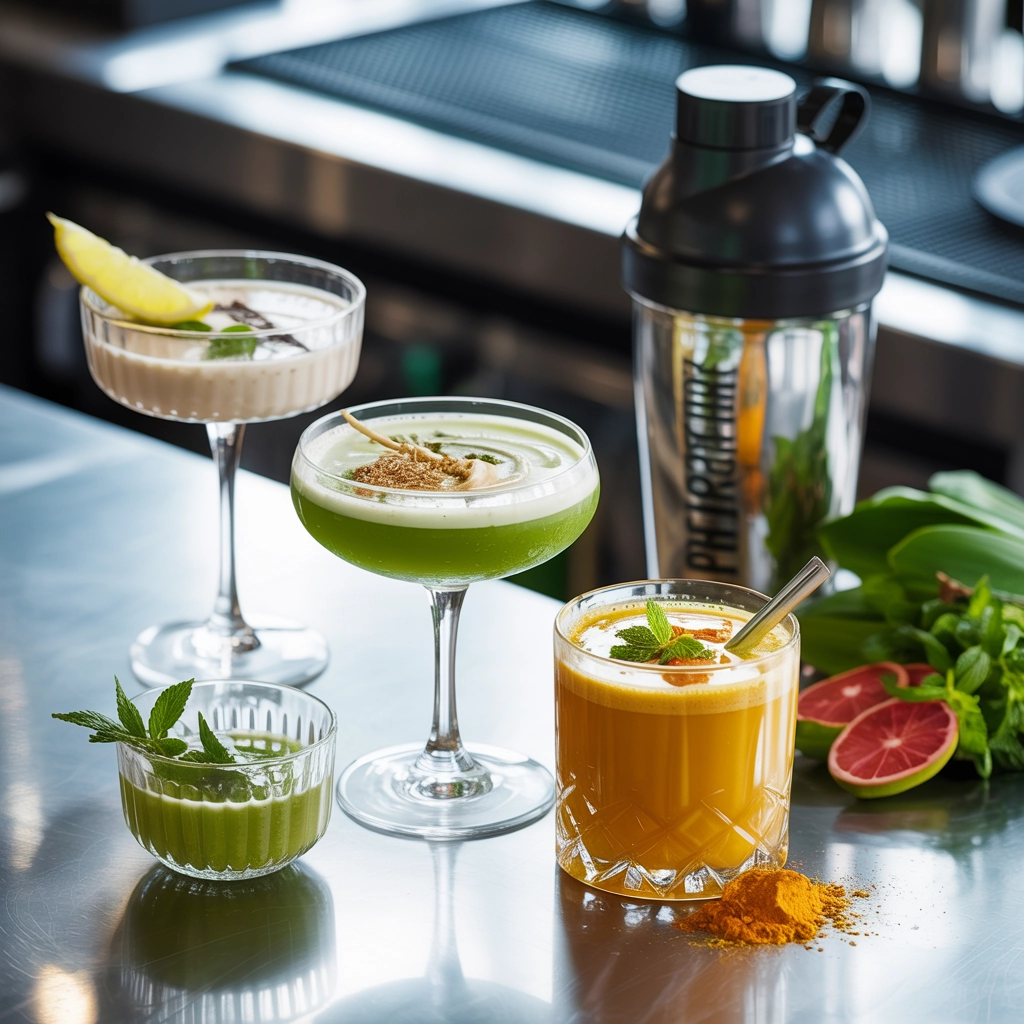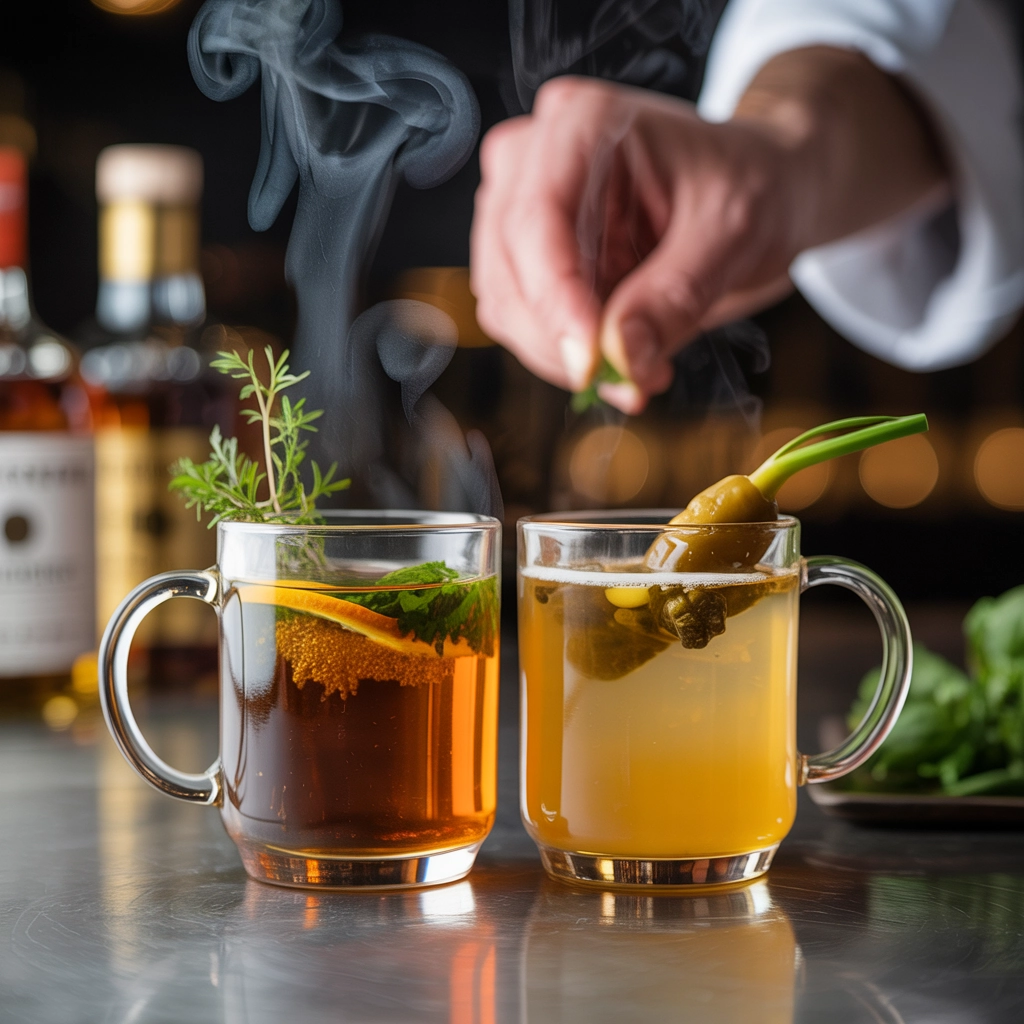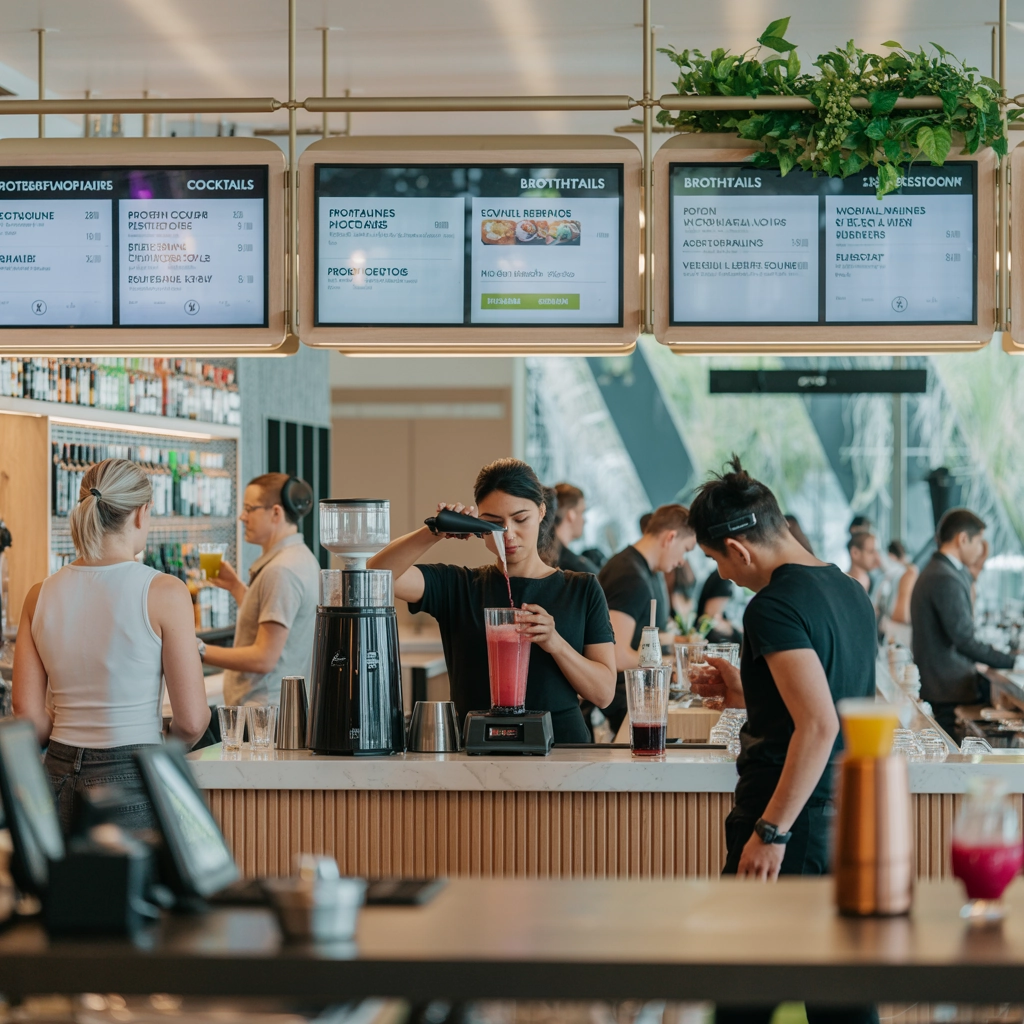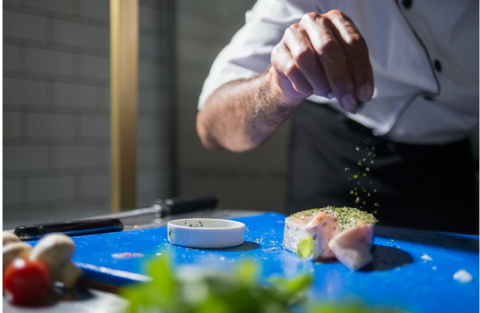The cocktail scene is undergoing a revolutionary transformation in 2025, with wellness and functionality taking center stage in ways we've never seen before. Move over, traditional spirits and mixers—protein cocktails and brothtails are the buzzworthy innovations capturing the attention of both health-conscious consumers and innovative bar programs nationwide.
The Rise of Functional Beverages: Where Wellness Meets Mixology
The line between the gym and the bar is blurring. Today's consumers are no longer willing to compartmentalize their wellness goals and social lives. Instead, they're demanding beverages that can multitask as effectively as they do—drinks that offer nutritional benefits while delivering the experience and sophisticated flavors they crave.
"We're seeing a fundamental shift in what people expect from their drinks," explains Amara Chen, beverage director at Nourish & Sip (nourishandsip.com). "The modern consumer doesn't want to choose between health and enjoyment. They want both in the same glass, and they're willing to pay premium prices for innovative options that deliver."
This consumer mindset has sparked what industry insiders are calling the "functional cocktail revolution," with protein-enhanced beverages and savory brothtails leading the charge in transforming bar menus across the country.
Protein Cocktails: Mixing Muscle and Mixology
Protein cocktails represent the perfect marriage of fitness culture and nightlife, combining the nutritional benefits of protein supplements with the sophisticated flavor profiles of craft cocktails.

What Makes Protein Cocktails Different?
Unlike traditional cocktails that might leave you feeling depleted the next day, protein cocktails are designed to complement active lifestyles. They typically contain:
- High-quality protein sources (whey isolate, pea protein, collagen peptides)
- Lower alcohol content (often 5-8% ABV)
- Functional ingredients (adaptogens, electrolytes, vitamins)
- Creative flavor combinations that mask the potentially chalky texture of protein
"The texture is the biggest challenge," says Marcus Reyes, head bartender at FitMix (fitmixbar.com) in Los Angeles. "We've spent months perfecting techniques to incorporate protein without compromising mouthfeel. The breakthrough came when we started using hydrolyzed collagen and specialized emulsification methods that maintain the silky texture people expect from a premium cocktail."
Popular Protein Cocktail Variations
The protein cocktail trend has spawned several popular sub-categories that are appearing on menus nationwide:
Recovery Cocktails: Designed for post-workout consumption, these typically pair clear spirits with electrolytes, branch-chain amino acids, and easy-to-digest proteins. Examples include the "Muscle Mule" (vodka, ginger, lime, and 15g of whey protein) and the "Deadlift Daiquiri" (white rum, lime, simple syrup, and pea protein isolate).
Breakfast Cocktails: Morning-appropriate protein cocktails are giving traditional brunch drinks a run for their money. The "Protein Espresso Martini" has become a signature offering at many establishments, combining vodka, coffee liqueur, espresso, and vanilla protein for a drink that delivers energy and indulgence in equal measure.
Dessert Alternatives: With consumers increasingly conscious of sugar intake, protein-enhanced cocktails are filling the dessert drink niche with options like the "Chocolate Protein Old Fashioned" and "Vanilla Protein White Russian" that satisfy sweet cravings while offering nutritional benefits.
Brothtails: Savory, Sophisticated, and Surprisingly Delicious
While protein cocktails appeal primarily to the fitness crowd, brothtails are attracting culinary enthusiasts looking for complex, savory flavor experiences. Rooted in the centuries-old tradition of "restorative" alcoholic drinks, brothtails blend stocks, broths, and spirits into warming, umami-rich libations.

"Brothtails tap into something primal," explains James Chen, founder of Bone & Barrel (boneandbarrel.com), a speakeasy-style bar specializing in savory cocktails. "There's something deeply satisfying about the combination of rich, savory flavors with the warmth of alcohol. It's comfort and sophistication in one glass."
The Brothtail Blueprint
The typical brothtail contains:
- A clear, flavorful stock or broth base (chicken, beef, mushroom, vegetable)
- Complementary spirits (typically whiskey, gin, or vodka)
- Aromatics and garnishes (herbs, spices, pickled vegetables)
- Umami-enhancing ingredients (fish sauce, soy sauce, miso)
The preparation requires careful attention to temperature—brothtails are typically served warm but not hot, allowing the flavors to shine without overwhelming the palate with heat.
Regional Brothtail Variations
Different regions have put their own spin on the brothtail concept:
West Coast Vegan Brothtails: In health-conscious California markets, plant-based brothtails made with mushroom and vegetable stocks infused with herbs like lemongrass and thyme are paired with botanical gins and vodkas.
Southern-Inspired Broths: In cities like Nashville and Charleston, chefs and bartenders are collaborating on brothtails featuring long-simmered ham hock or chicken broths, bourbon, and bitters.
Asian-Influenced Creations: Major metropolitan areas are seeing brothtails inspired by Asian culinary traditions, such as pho-inspired cocktails with beef broth, star anise, and rice whiskey or dashi-based drinks with Japanese whisky and yuzu.
How Bars and Restaurants Are Adapting
The rise of these functional beverages is causing ripple effects throughout the hospitality industry, forcing establishments to rethink their bar programs and equipment.

Menu Integration Strategies
Forward-thinking establishments are finding creative ways to incorporate these new drink categories:
- Dedicated Sections: Many bars are creating dedicated menu sections for functional cocktails, highlighting nutritional benefits alongside flavor descriptions.
- Daytime Offerings: Protein cocktails and non-alcoholic brothtails are helping bars extend their operating hours into daytime, appealing to remote workers and the post-gym crowd.
- Pairing Menus: Some restaurants are developing food and brothtail pairing menus that showcase complementary flavors and nutritional profiles.
Equipment and Staffing Considerations
These trends are requiring new equipment and expertise:
- Temperature-Controlled Dispensing Systems: To serve brothtails at the optimal temperature consistently.
- High-Performance Blenders: For properly incorporating protein without clumping.
- Staff Training: Bartenders need additional training in nutritional information and proper handling of protein supplements and broths.
"The investment in equipment and training is substantial," admits Elena Gomez, operations director at The Wellness Bar (thewellnessbar.com). "But we've seen a 30% increase in daytime revenue since introducing our functional cocktail program. The ROI has been remarkable."
Consumer Demographics and Market Potential
The appeal of these innovative beverages crosses demographic lines, though certain patterns are emerging:
- Protein Cocktails: Particularly popular with millennials and Gen Z consumers aged 25-40, especially those who identify as fitness enthusiasts or "fitness-adjacent" consumers who value wellness without strict regimens.
- Brothtails: Appealing to culinary adventurers and food enthusiasts across age groups, with particular traction among the 35-55 demographic with sophisticated palates and disposable income.
According to market research firm Beverage Insights, the functional cocktail category is projected to reach $1.2 billion by 2026, growing at a compound annual rate of 18.5%—significantly outpacing the broader cocktail market's 4.2% growth rate.
Challenges and Considerations
Despite their popularity, these beverage trends face several challenges:
Regulatory Uncertainties
The combination of supplements and alcohol exists in a regulatory gray area in many jurisdictions. "We're careful about our claims," notes regulatory consultant Maya Williams. "You can't market alcohol as healthy, but you can highlight ingredients with functional benefits. It's a fine line to walk."
Quality Control Issues
Maintaining consistent quality presents another challenge. Protein can denature at high temperatures or when mixed with certain ingredients, while broths require strict food safety protocols to prevent spoilage.
Consumer Education
Both categories require consumer education. "We spend a lot of time training our staff to explain these drinks," says Daniel Park, bar manager at Protein & Pour (proteinandpour.com). "The first reaction is often skepticism, but once people try them, they're usually converted."
How to Integrate These Trends Into Your Bar Program
For operators looking to capitalize on these trends, here are key recommendations:
- Start Small: Test one or two offerings before committing to a full program.
- Partner with Experts: Collaborate with nutritionists or chefs to develop balanced, flavorful options.
- Invest in Training: Ensure your staff understands the unique selling points and preparation methods.
- Tell the Story: Use menu descriptions, social media, and server interactions to educate customers about the benefits and inspiration behind these innovative drinks.
- Consider Your Market: Urban areas with active fitness communities are natural markets for protein cocktails, while food-centric markets may be more receptive to brothtails.
For more on emerging flavor trends that pair well with these innovative cocktails, check out our article on flavor mashups and mocktails and 2025's bold sauce trends.
The Future of Functional Beverages
As we look beyond 2025, these categories will likely continue to evolve. Industry experts predict:
- Personalization: Bars offering customizable protein levels and adaptogen blends based on individual preferences.
- Sustainability Focus: More emphasis on sustainable protein sources and waste reduction in broth production.
- Technology Integration: Apps that recommend functional cocktails based on workout data or dietary preferences.
- Home Consumption: Retail products allowing consumers to recreate these experiences at home.
"We're just at the beginning of this revolution," predicts beverage trend forecaster Sarah Johnson. "The next five years will bring innovations we can't even imagine yet, as the boundaries between nutrition, wellness, and indulgence continue to blur."
Whether you're a bar owner, beverage director, or curious consumer, one thing is clear: the days of one-dimensional cocktails are behind us. The future belongs to drinks that do more—providing not just a moment of pleasure, but functional benefits that extend beyond the last sip.
Written by Michael Politz, Author of Guide to Restaurant Success: The Proven Process for Starting Any Restaurant Business From Scratch to Success (ISBN: 978-1-119-66896-1), Founder of Food & Beverage Magazine, the leading online magazine and resource in the industry. Designer of the Bluetooth logo and recognized in Entrepreneur Magazine's "Top 40 Under 40" for founding American Wholesale Floral. Politz is also the founder of the Proof Awards and the CPG Awards and a partner in numerous consumer brands across the food and beverage sector.








